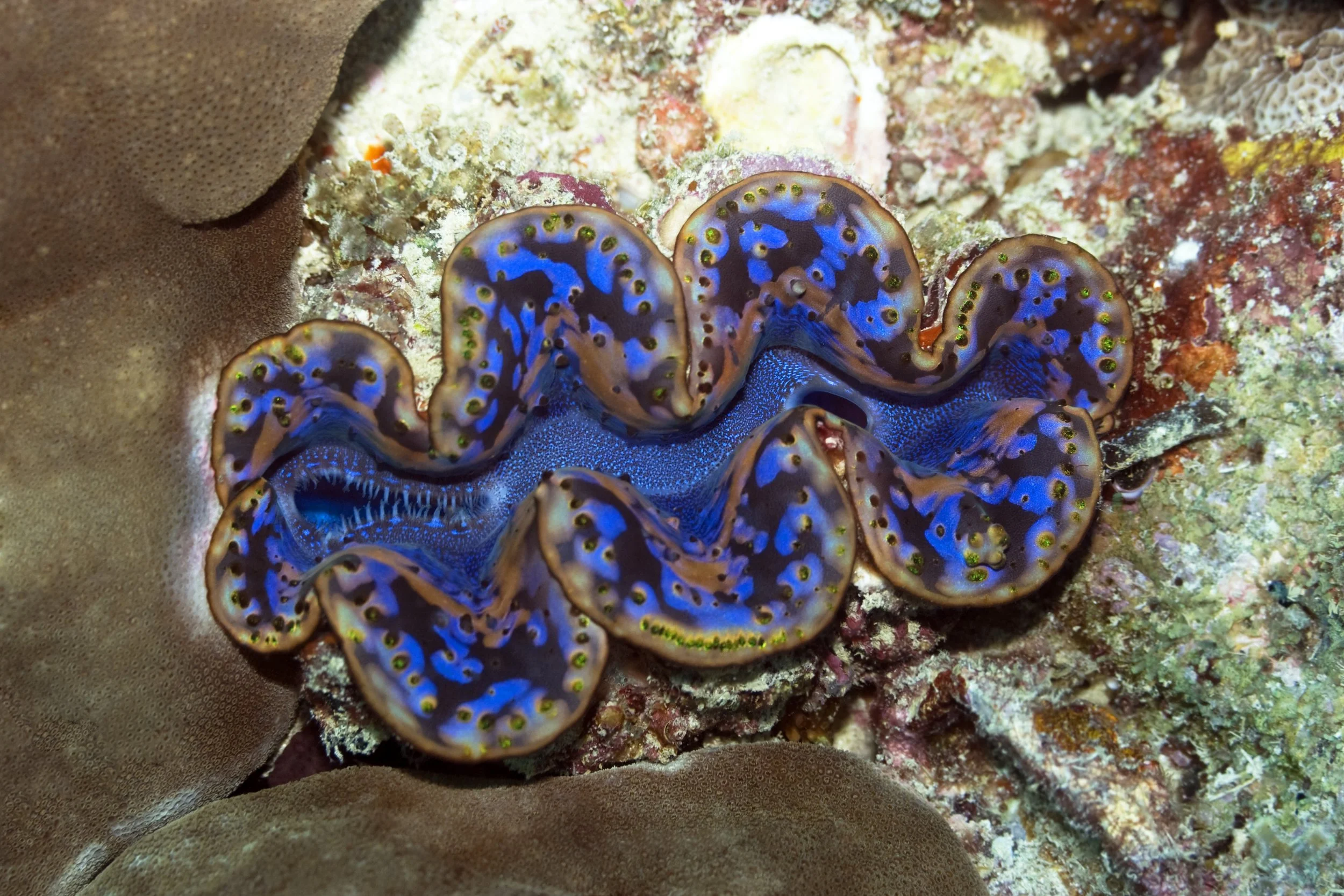Genomes Beneath the Waves: Safeguarding Marine Biodiversity
The giant clam (Tridacna maxima), a reef-dwelling photosymbiotic species.
Genomic research is opening new pathways for marine conservation. Work on giant clam genomes (Li et al., 2025), led by the Sanger Institute’s Aquatic Symbiosis Genomics Project, has already demonstrated the power of these tools. The genomic data helped demonstrate the vulnerability of giant clams and supported their listing as Endangered, a decision that is now shaping policies and protections for their survival (Li et al., 2025).
Across the EBP, affiliated projects are generating reference genomes for many threatened marine species. One striking example is the short-snouted seahorse (Hippocampus hippocampus). Although classified among teleost fishes, seahorses are unmistakable: a horse-like head and upper body, a curled fish-like tail, and a reproductive system where males carry fertilized eggs in a brood pouch until they hatch. These animals are increasingly at risk from habitat loss and accidental capture in fishing gear. High-quality genomes are enabling researchers to investigate population structure, genetic diversity, and resilience, thereby providing a stronger scientific foundation for conservation.
The short-snouted seahorse (Hippocampus hippocampus), a coastal species of European waters.
This seahorse genome was produced by ATLASea, an EBP-affiliated project driving advances in marine biodiversity genomics. The team has also assembled a reference genome for the Green Ormer, or European abalone, listed as Vulnerable on the IUCN Red List. Abalones are prized both for their meat and for their shells lined with shimmering mother-of-pearl. The Green Ormer, found along rocky Mediterranean and Atlantic coastlines, is no exception. Overharvesting and the spread of bacterial disease have left populations under serious pressure. Genomic resources are providing scientists with the means to better understand their biology, design more effective conservation measures, and guide the sustainable management of these valuable molluscs.
Genomic data can also reveal whether populations of these slow-moving animals have become fragmented. Such knowledge helps guide management decisions, including whether moving individuals into neighboring populations might strengthen genetic diversity. Similar approaches were highlighted in an earlier EBP Life newsletter, which featured the California Conservation Genomics Group’s work on a critically endangered California abalone.




